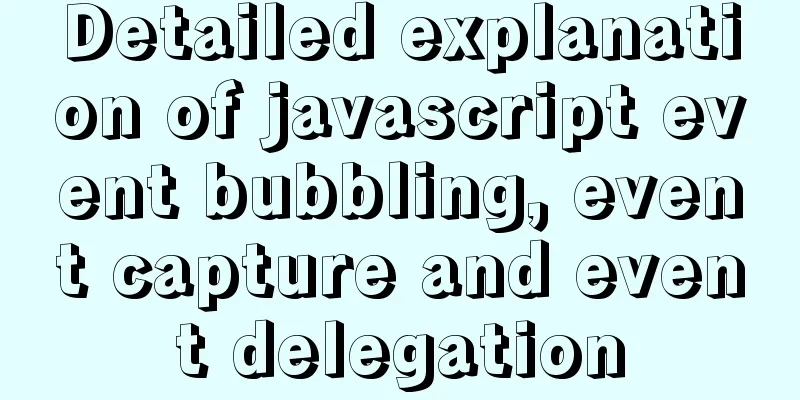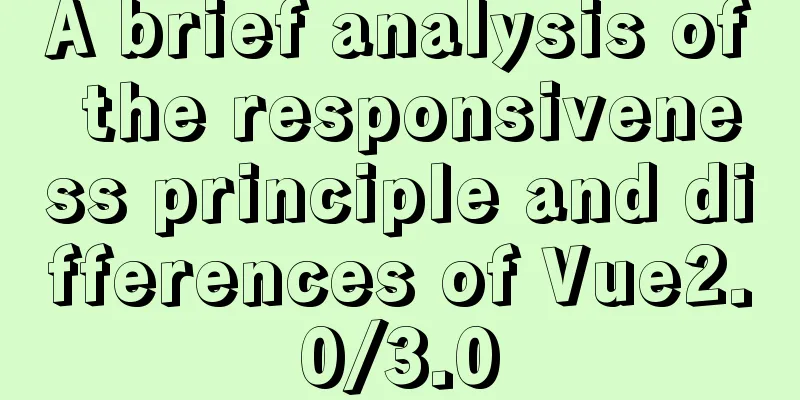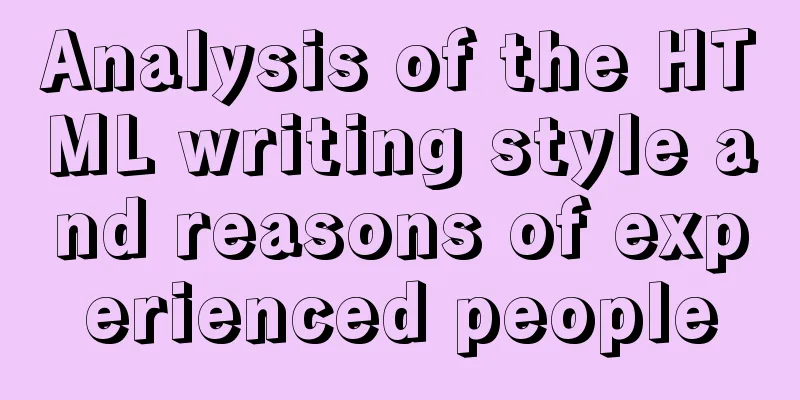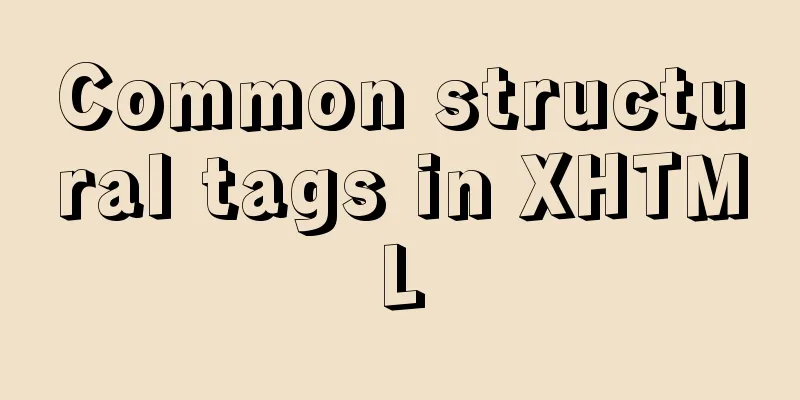Differences between MySQL CHAR and VARCHAR when storing and reading
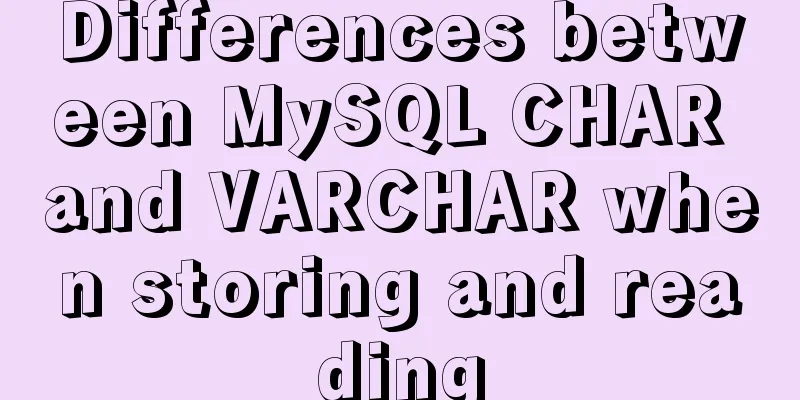
|
Introduction Do you really know the difference between CHAR and VARCHAR types when storing and reading? Let me first draw a few conclusions: 1. When storing, CHAR will always be padded with spaces before storing, regardless of whether the user contains spaces at the end when inserting data. 2. When storing, VARCHAR will not fill in spaces before storing, but if the user specifically adds spaces when inserting, it will be stored as it is and will not be deleted. 3. When reading data, CHAR always deletes trailing spaces (even if spaces are included when writing). 4. When reading data, VARCHAR always retrieves the previously stored value truthfully (if there is a trailing space when storing, it will continue to be retained and the trailing space will not be deleted like CHAR). The following is the test verification process. 1. Test CHAR type Table structure: CREATE TABLE `tchar` ( `id` int(10) unsigned NOT NULL DEFAULT '0', `c1` char(20) NOT NULL DEFAULT '', PRIMARY KEY (`id`) )ENGINE=InnoDB DEFAULT CHARSET=utf8mb4; Insert a few records:
insert into tchar values (1, concat('a', repeat(' ',19)));
insert into tchar values (2, concat(' ', repeat('a',19)));
insert into tchar values (3, 'a');
insert into tchar values (4, ' ');
insert into tchar values (5, '');View the storage structure: (1) INFIMUM record offset:99 heapno:0 ... (2) SUPREMUM record offset:112 heapno:1 ... (3) normal record offset:126 heapno:2 ... <- id=1 (4) normal record offset:169 heapno:3 ... <- id=2 (5) normal record offset:212 heapno:4 ... <- id=3 (6) normal record offset:255 heapno:5 ... <- id=4 (7) normal record offset:298 heapno:6 ... <- id=5 Are you a little confused when you see this stuff? Do you remember the tool I recommended to you? Look here: innblock | InnoDB page observation tool. As you can see, no matter how long the string is, each record actually takes up 43 (169-126=43) bytes. Therefore, Conclusion 1 holds. Let's look at the results of reading the tchar table:
select id,concat('000',c1,'$$$'),length(c1) from tchar;
+----+----------------------------+------------+
| id | concat('000',c1,'$$$') | length(c1) |
+----+----------------------------+------------+
| 1 | 000a$$$ | 1 | <- remove trailing spaces | 2 | 000 aaaaaaaaaaaaaaaaaaaa$$$ | 20 |
| 3 | 000a$$$ | 1 |
| 4 | 000$$$ | 0 | <- Remove the trailing space, the result is the same as id=5 | 5 | 000$$$ | 0 |
+----+----------------------------+------------+2. Test VARCHAR type Table structure: CREATE TABLE `tvarchar` ( `id` int(10) unsigned NOT NULL DEFAULT '0', `c1` varchar(20) NOT NULL DEFAULT '', PRIMARY KEY (`id`) ) ENGINE=InnoDB DEFAULT CHARSET=utf8mb4 Insert a few records:
insert into tvarchar values (1, concat('a', repeat(' ',19)));
insert into tvarchar values (2, concat(' ', repeat('a',19)));
insert into tvarchar values (3, 'a');
insert into tvarchar values (4, ' ');
insert into tvarchar values (5, '');
insert into tvarchar values (6, '');View the storage structure: (1) INFIMUM record offset:99 heapno:0 ... (2) SUPREMUM record offset:112 heapno:1 ... (3) normal record offset:126 heapno:2 ... <- id=1 (4) normal record offset:169 heapno:3 ... <- id=2 (5) normal record offset:212 heapno:4 ... <- id=3 (6) normal record offset:236 heapno:5 ... <- id=4 (7) normal record offset:260 heapno:6 ... <- id=5 (8) normal record offset:283 heapno:7 ... <- id=6 It can be seen that the number of bytes of several records are: 43, 43, 24, 24, 23, 23 (the last record is the same as the record with id=5). Let's look at the results of reading the tvarchar table:
select id,concat('000',c1,'$$$'),length(c1) from tvarchar;
+----+----------------------------+------------+
| id | concat('000',c1,'$$$') | length(c1) |
+----+----------------------------+------------+
| 1 | 000a $$$ | 20 | <- trailing spaces are not removed in the read result | 2 | 000 aaaaaaaaaaaaaaaaaaaa$$$ | 20 |
| 3 | 000a$$$ | 1 |
| 4 | 000 $$$ | 1 | <- This space is not deleted in the read result | 5 | 000$$$ | 0 |
| 6 | 000$$$ | 0 |
+----+----------------------------+------------+ In general, two conclusions can be drawn: Finally, let’s see what the documentation says:
The versions and environments used in the above tests are: mysql> select version()\G ... version(): 8.0.15 mysql> select @@sql_mode\G ... @@sql_mode: ONLY_FULL_GROUP_BY,STRICT_TRANS_TABLES,NO_ZERO_IN_DATE,NO_ZERO_DATE,ERROR_FOR_DIVISION_BY_ZERO,NO_ENGINE_SUBSTITUTION Reference Documentation 11.4.1 The CHAR and VARCHAR Types, https://dev.mysql.com/doc/refman/5.7/en/char.html The above is the detailed content of the difference between MySQL CHAR and VARCHAR storage. For more information about MySQL CHAR and VARCHAR, please pay attention to other related articles on 123WORDPRESS.COM! You may also be interested in:
|
<<: js to achieve the effect of dragging the slider
>>: Detailed explanation of the implementation process of ServerSocket default IP binding
Recommend
Implementation of Grid common layout
No gaps on both sides, gaps between each column w...
Explanation of MySQL's horizontal and vertical table partitioning
In my previous article, I said that the optimizat...
A brief understanding of the difference between MySQL union all and union
Union is a union operation on the data, excluding...
CSS realizes div completely centered without setting height
Require The div under the body is vertically cent...
Sample code for flask and vue front-end and back-end separation project deployment
I developed a project some time ago. I used the f...
Mysql: The user specified as a definer ('xxx@'%') does not exist solution
During the project optimization today, MySQL had ...
Web standards learning to understand the separation of structure and presentation
When discussing Web standards, one thing that alwa...
Detailed explanation of the problem of CSS class names
The following CSS class names starting with a num...
Have you carefully understood Tags How it is defined How to use
Preface : Today I was asked, "Have you carefu...
mysql add, delete, modify and query basic statements
grammar Here is the generic SQL syntax for INSERT...
The whole process record of Vue export Excel function
Table of contents 1. Front-end leading process: 2...
JavaScript uses setTimeout to achieve countdown effect
In order to enhance the ability to write JavaScri...
JavaScript imitates Xiaomi carousel effect
This article is a self-written imitation of the X...
Tutorial on installing MySQL8 compressed package version on Win10
1 Download MySQL8 from the official website and i...
How to install mysql via yum on centos7
1. Check whether MySQL is installed yum list inst...


